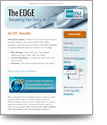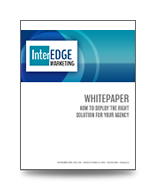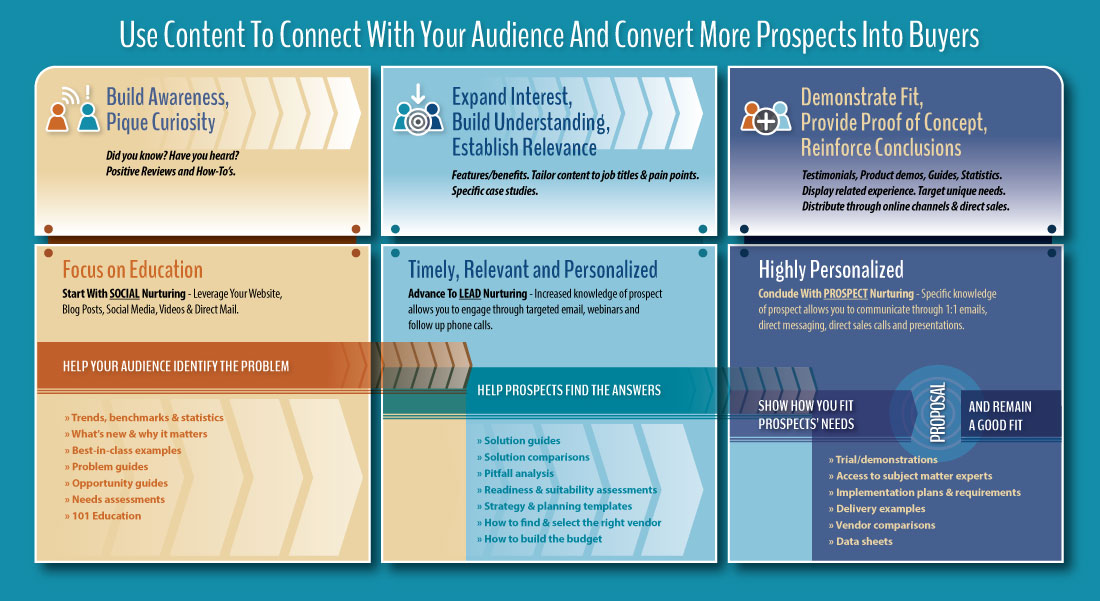
The band Kiss formed over 50 years ago. But their popularity soared when they wore extreme makeup, outrageous costumes and combined their music with a theatrical-like performance. Why did they decide to go that route? Because they were determined to create an experience they themselves would have paid money to see. And whether or not you are a Kiss fan, you can apply that same lesson to identify new capabilities for your business.
Identify New Capabilities
When you play the role of consumer, what would you be a customer of? What business or life events drive your interest in, need for, or use of certain products? How could a new capability or better execution simplify, streamline or enhance a process?
After you answer, then go make that thing.
A Personalized Experience
Even in a time of increased concern over privacy, personalization matters. When companies do it poorly, consumers go elsewhere. But, when companies do it well, personalization drives revenue.
In fact, Accenture found that 75% of consumers are more likely to make a purchase from a company that knows their name and purchase history and recommends products based on their preferences. Yet, despite the overwhelming evidence on the sales impact, companies don’t execute personalization effectively.
For example, website visits and outbound digital communications are common vehicles used to provide a personalized experience. But, print plays an important role. One study found that people spend 25% more when using direct mail in combination with email marketing. And, direct mail comes in many forms.
Mini Catalogs
Digitally printed flyers or mini catalogs that contain products complementary to past purchases, along with useful tips, can be used to trigger new purchases. For example, one fashion brand includes details in their materials on how to ensure proper care and cleaning of the item to extend its life. And, a housewares provider includes meal preparation, time-saving tips and QR codes that link to humorous but instructional videos which serve three functions:
- The videos provide useful information while enhancing their brand
- They route consumers to their digital platform
- They measure the impact of the printed material on site traffic and additional order volume
Dynamic Kits
Personalized kits containing information that’s specific to a customer’s unique situation isn’t a new concept. But, like many digital communications failures, it remains an area that organizations don’t execute consistently. Whether it’s personalized to a specific individual, a business function or an event, customization impacts the consumer. And, in addition to the potential impact on purchasing behavior, it delivers many other benefits.
- Increased understanding - health insurance is hard enough to understand when it contains the exact information that pertains to your specific health plan. But, when the packet includes only general materials or worse yet, details that don’t apply, comprehension drops. This results in avoidable inquiries to customer service, less satisfied customers and unnecessary expenses.
- Improved version control - a dynamic kit is easily updated making it far more likely to represent the correct information. For example, with frequent changes to internal and external hiring and onboarding rules and regulations, the accuracy of a dynamic hiring/employment kit is far more likely.
- Deeper connections - a dynamic kit can form a one-to-one connection that elevates a brand perception. When a prospect requests a sample, sending a kit that contains a replica of the item with targeted and personalized supplemental information creates a positive impression and makes them more likely to buy.
- Aids decision making - after a trade show, follow up kits containing materials specific to an attendees interests accelerates the path to purchase.
In-Store Experience
If you’re like me and avoid shopping whenever possible, you don’t expect to know the location of an item in a store you rarely shop at. But regular shoppers do have that expectation. And, wandering around trying to find the item you need can become an unnecessary time waster. Plus, as stores employ fewer associates to guide consumers, it worsens the problem and creates a brand-eroding experience.
It’s true that some retailers shift the locations of certain products to route shoppers through different parts of the store. But, these shifts aren’t intended to erode the in-store shopping experience. Finding the product in a timely manner is still the expectation.
Find Ways To Save Customers’ Time
Using QR codes on in-store signage and displays provides customers extra information that can save them time and heighten their interest. Stores know the location of their products. But many don’t provide a way to access it. Plus, when they do provide a list, the number of items they carry make it impossible to show everything. Using printed materials containing a QR code allows the consumer to easily access an online search tool which makes finding the location easy.
In addition, QR codes that link to additional product information, or even specials that aren’t otherwise advertised, can engage shoppers and elevate their experience.
Obviously, these alternatives require more than printed materials. But, combining the print and online expertise provides an added value experience that retailers can’t find just anywhere.
Create Pop-Up Shops
Pop-up shops usually allow other brands to temporarily set up within another retailer’s store. This certainly can benefit the brand but it also assists consumers. A pop-up shop that provides education and instruction assists shoppers and typically increases the sell-through of that product. Pop-up stores typically include signage, POP displays, floor graphics and more.
Plus, this concept is exclusive to a brand the retailer carries. They can use this same concept to showcase a particular line of products or segments of their own inventory.
Differentiation
In the 70s, Kiss played hard rock. In fact, they were one of hundreds of bands that played that genre of music. Although their music may have struck a chord with certain people, it was the “glamour” part of their act that set them apart
And, also in the 1970s, it was the actual print product that distinguished one printer from another. But, today, advances in print technology make print craftsmanship harder to differentiate. Plus, the shift to younger, less experienced print buyers and the propensity of digital alternatives means it may take some “glamour” to set you apart. Making the thing that you would be a customer of can glamorize your company and create new opportunities that were previously not available.
InterEdge Marketing
InterEdge Marketing specializes in helping organizations identify new capabilities and grow their business through new product development and effective marketing programs. Contact us for more information.



 Insight Delivered Directly to You Interesting topics, great offers and free marketing tools.
Insight Delivered Directly to You Interesting topics, great offers and free marketing tools.

